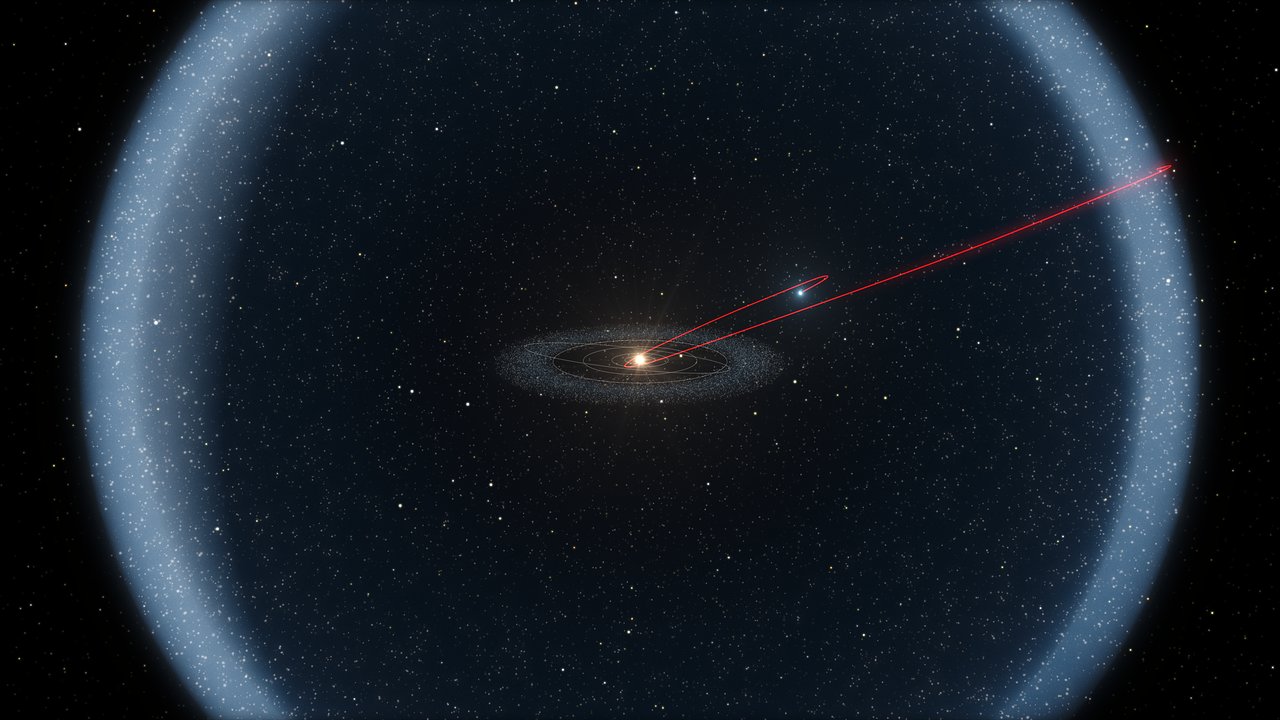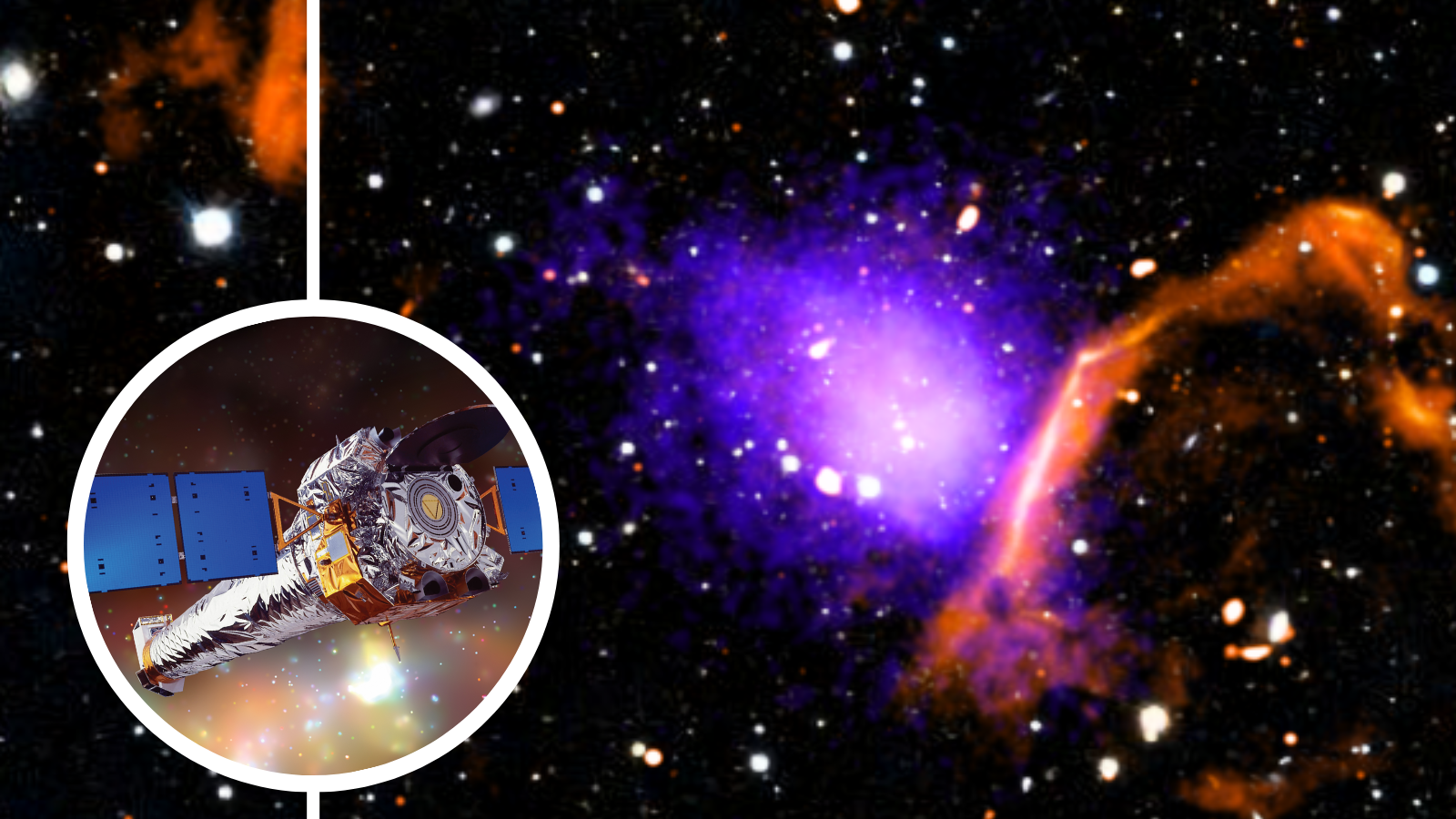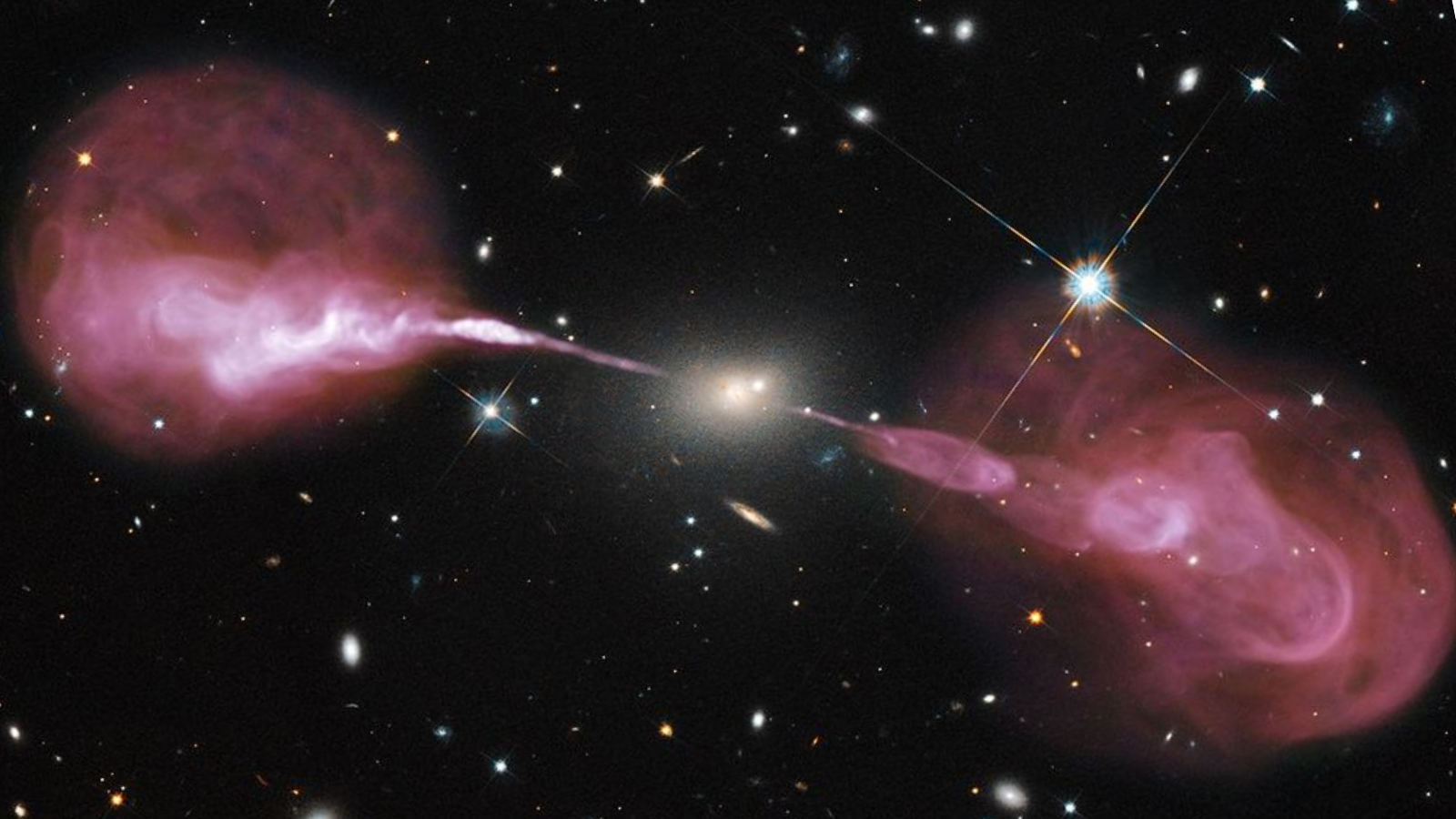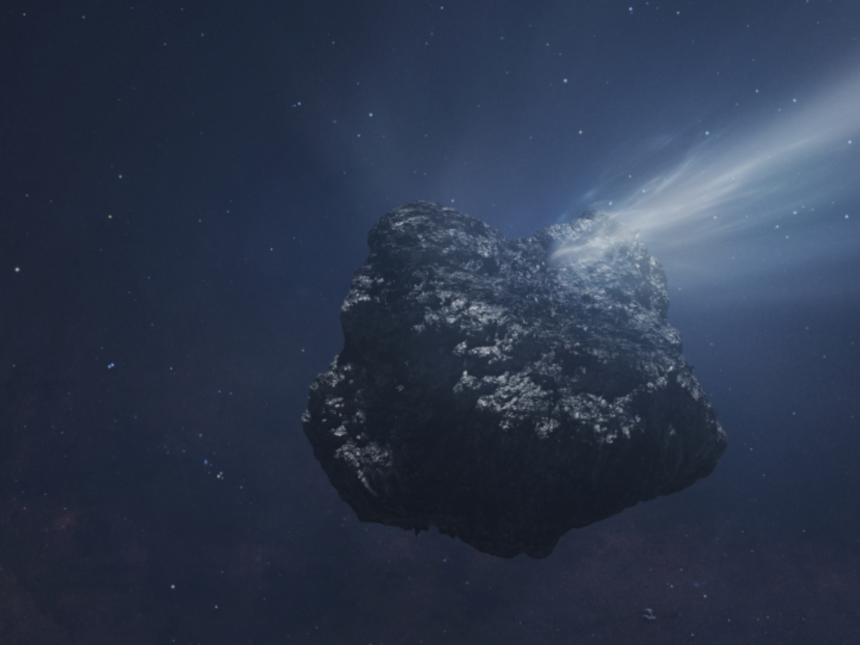Introduction
In a remarkable discovery, scientists have observed active gas jets erupting from the largest known Oort Cloud comet C/2014 UN271 (Bernardinelli-Bernstein). Located at the distant edge of our solar system, this giant comet has revealed key insights into the early days of planetary formation. Using the powerful Atacama Large Millimeter/submillimeter Array (ALMA) in Chile, researchers detected outbursts of carbon monoxide gas as far as 16 astronomical units (AU) from the Sun — far beyond Saturn’s orbit.

What Makes C/2014 UN271 Unique?
Discovered in 2014 by astronomers Pedro Bernardinelli and Gary Bernstein, C/2014 UN271 immediately stood out for its sheer size and origin. Estimated at nearly 137 km (85 miles) wide, it’s roughly 10 times larger than typical comets seen in the inner solar system. Scientists believe it originated from the Oort Cloud, a distant spherical shell of icy bodies surrounding the solar system, located between 2,000 and 100,000 AU from the Sun. Objects from this cloud are considered some of the most primitive leftovers from the early solar system, preserving 4.6 billion years of cosmic history Oort Cloud comet C/2014 UN271.
Active Even Far From the Sun
Comets typically become active only when they approach the inner solar system, where solar radiation heats their icy cores and triggers outgassing. However, C/2014 UN271 is behaving differently. At a staggering distance of over 16 AU, researchers observed it already producing carbon monoxide gas jets. This is significant because such hypervolatiles require very little warming to sublimate, suggesting that internal activity may start much farther from the Sun than previously believed.
How ALMA Made the Discovery

The ALMA observatory, operated by an international consortium including the National Radio Astronomy Observatory (NRAO), is uniquely suited to detect molecular signatures in deep space. Its 66 interconnected radio antennas allowed scientists to detect the faint thermal radiation and spectral fingerprints of carbon monoxide molecules venting from the comet’s surface. These precise measurements not only confirmed active gas emissions but also helped accurately measure the size of the comet’s nucleus — making it officially the largest known Oort Cloud comet ever observed Oort Cloud comet C/2014 UN271.
Clues to the Early Solar System
Studying comets like C/2014 UN271 is crucial to understanding the early stages of solar system formation. Because Oort Cloud objects have remained frozen and relatively untouched for billions of years, they offer a pristine record of the primordial materials from which the Sun, Earth, and other planets formed. By analyzing the composition of the gases being released — including carbon monoxide, methane, and possibly ammonia — scientists can infer conditions in the early solar nebula.
According to NASA researchers, C/2014 UN271’s behavior indicates that large, distant comets may begin outgassing at much greater distances than previously modeled. This suggests our models of cometary activity, planetary migration, and solar system dynamics may need to be updated based on these rare observations Oort Cloud comet C/2014 UN271.
What Lies Ahead for This Giant Comet?

Currently traveling towards the inner solar system, C/2014 UN271 will reach its closest approach to the Sun (perihelion) in 2031, where it will still remain far outside Saturn’s orbit. Despite not becoming a spectacular naked-eye comet like those that approach Earth’s vicinity, it will continue offering invaluable data to scientists monitoring its chemical activity. As it moves closer, more complex molecules could become visible as additional ices sublimate from its core.
There is growing interest in launching future spacecraft missions to study such pristine Oort Cloud objects up close. Missions like ESA’s upcoming “Comet Interceptor” are being developed to fly by long-period comets to directly sample their composition — potentially targeting objects like C/2014 UN271 in future decades.
Conclusion
The discovery of active gas jets on C/2014 UN271 at such an extreme distance marks a significant milestone in our understanding of distant solar system objects. Thanks to ALMA’s unmatched observational capabilities, scientists now have a rare window into the chemistry and physical processes occurring on one of the most distant and massive comets ever seen. As this ancient icy body journeys closer to the Sun over the next several years, it promises to reveal even more secrets about the building blocks of our solar system.
Explore recent space science discoveries
For further reading, see ALMA’s official press release here, coverage by Space.com, and the peer-reviewed research paper published in *Astrophysical Journal Letters*.









